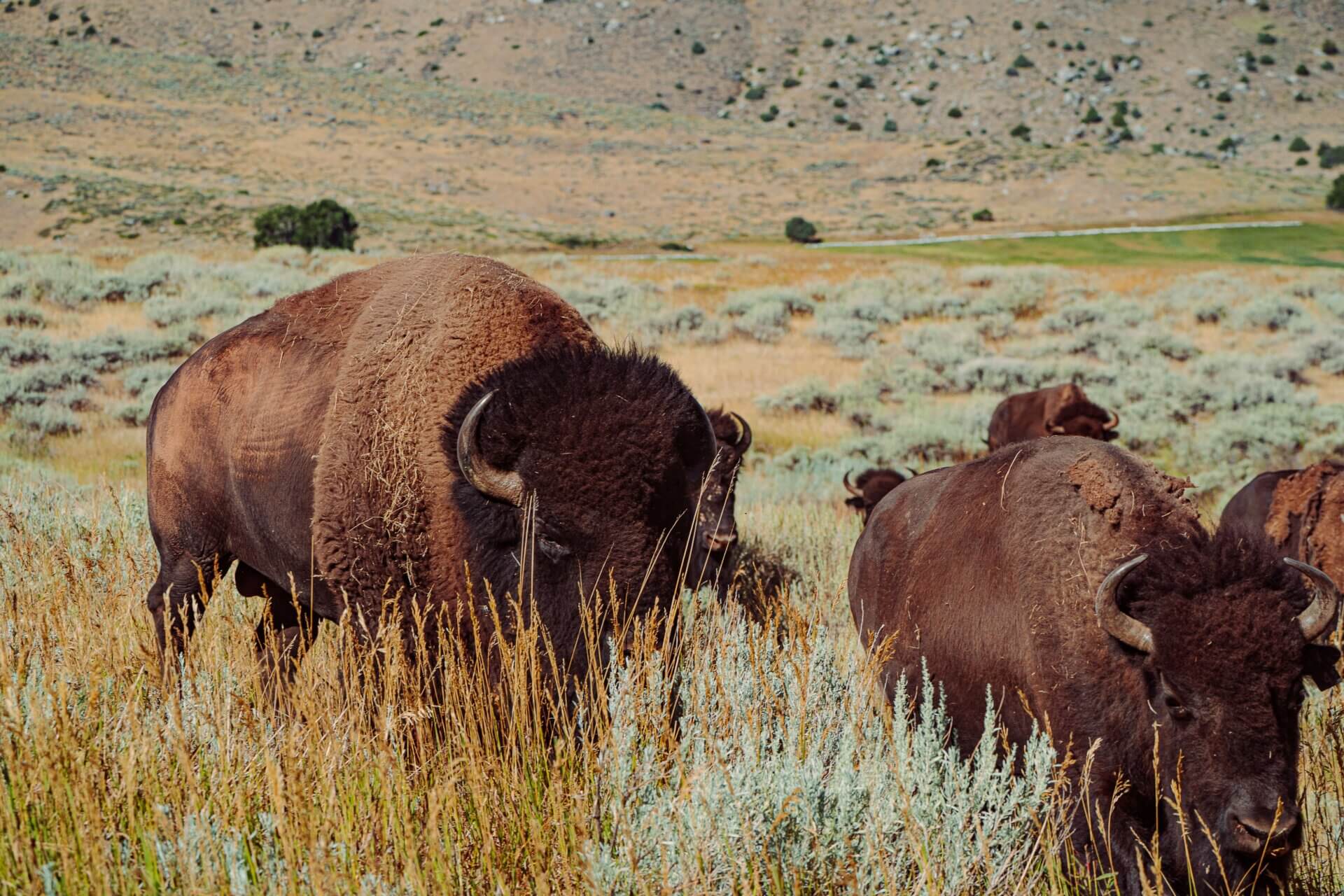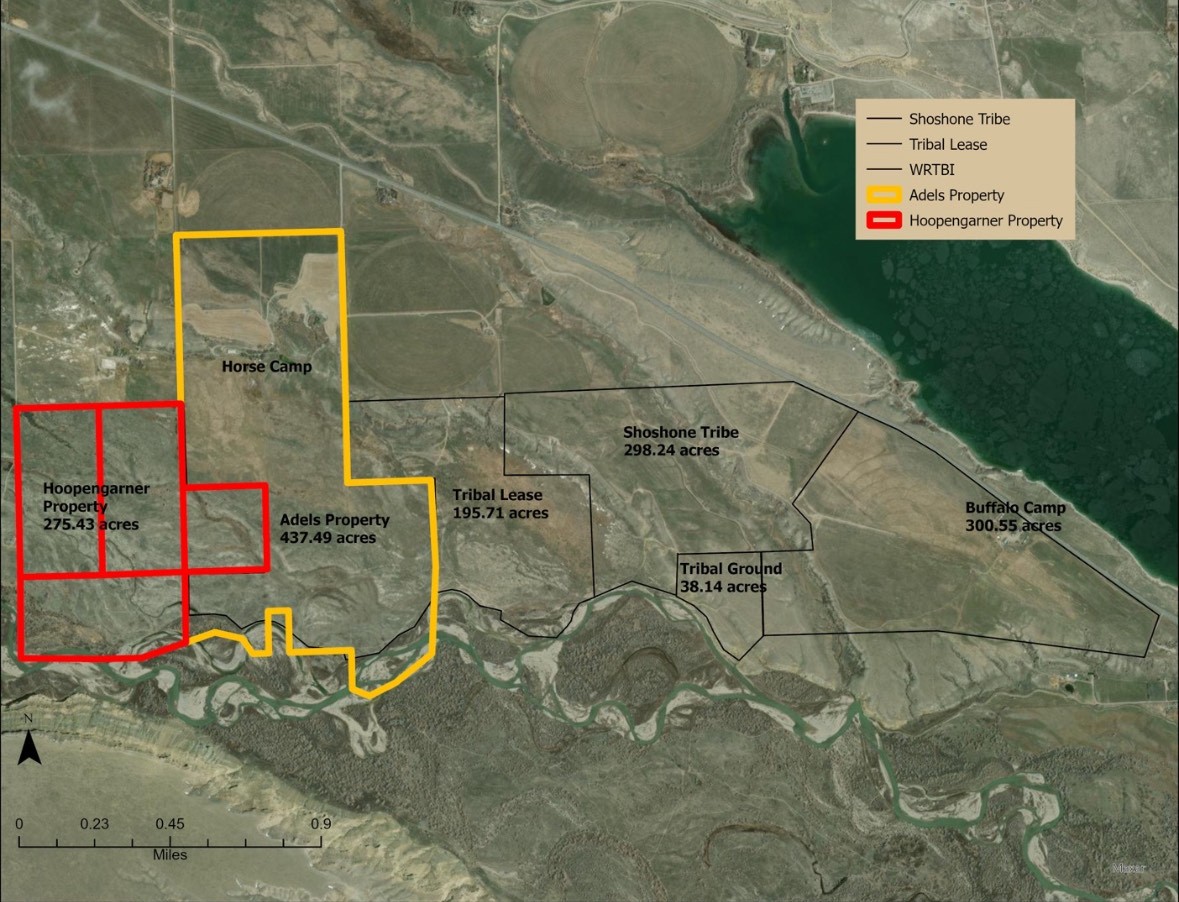
A Conservation Milestone for the Wind River Tribal Buffalo Initiative
Over the past three years, the Jackson Hole Land Trust (JHLT) has partnered with the Wind River Tribal Buffalo Initiative (WRTBI) to support the return of buffalo to the Wind River Indian Reservation (WRIR).
Thanks to the generosity of our community, JHLT partnered with WRTBI to raise $3.9 million to acquire 713 acres of vital riparian and buffalo habitat along the Wind River. This growing herd, more than 300 buffalo strong, will now be able to roam on land that connects key movement corridors spanning 1,800 private acres and 17,000 leased acres on WRIR lands. This new acquisition also expands the foundation for WRTBI’s powerful programs.
Historically, buffalo moved freely across this landscape to access a variety of habitats, from the river bottom of the WRIR into the mountains of the Wind River Range to the west and the Owl Creek Range to the northeast. The herds roamed much higher than we might think – there is local evidence of buffalo at elevations over 10,000 feet. Over time, buffalo were systematically extirpated from the landscape, except for a small, remnant herd in Yellowstone National Park. In the last decade, WRTBI has led a concerted effort to return this keystone species to targeted areas within the WRIR. With this latest key acquisition, WRTBI is one step closer to reconnecting buffalo with their traditional migratory pathways. This effort has the potential to become the largest keystone species restoration project in the United States.
As a keystone species, buffalo play a crucial role in shaping healthy ecosystems. Their behaviors – like wallowing, grazing, and roaming – create varied grass heights that support ground-nesting birds and other wildlife. Their movement improves soil health, fosters native plant growth, supports carbon sequestration, and spreads nitrogen-rich waste and seeds, enhancing the landscape for future growth. Where buffalo thrive, biodiversity flourishes.
In a pivotal step last year, both the Eastern Shoshone and Northern Arapaho Tribes voted to reclassify buffalo as wildlife. This historic decision affirms the buffalo as a vital part of the natural ecosystem – managed like elk or deer, rather than livestock – and honors their cultural and ecological significance. As High Country News noted, “Buffalo as wildlife allows the animals to exist on the landscape, rather than [being seen as] livestock based on economic paradigms.”
The Jackson Hole Land Trust is honored to continue our partnership with WRTBI in advancing this critical conservation work. Buffalo restoration is not only vital for Tribal communities – it’s a powerful invitation to all of us to engage in ecological renewal, reconciliation, and the cultivation of lasting, respectful relationships with land and people.
Follow WRTBI’s ongoing work on their website and sign up for their newsletter here.
